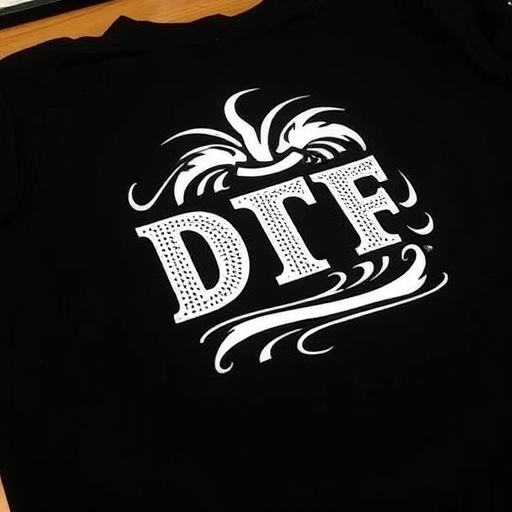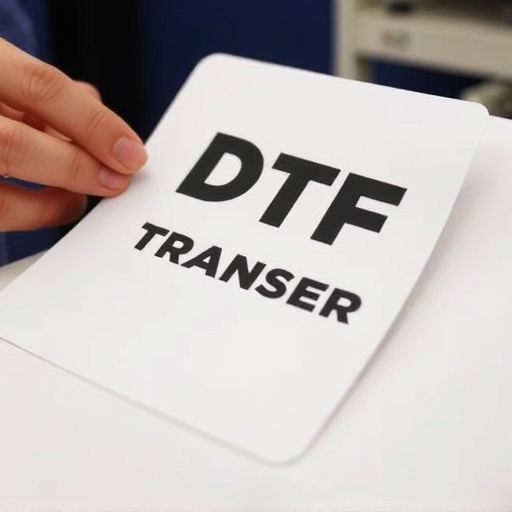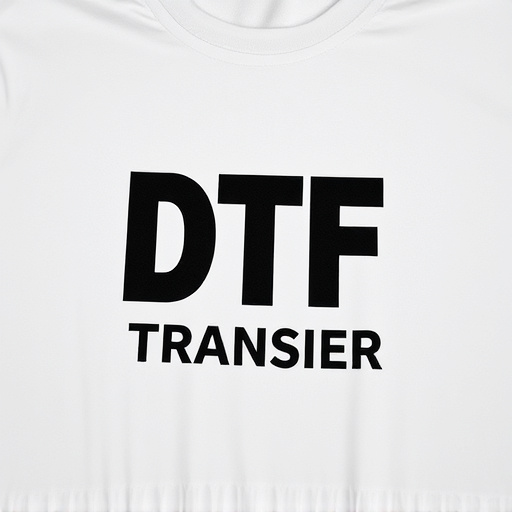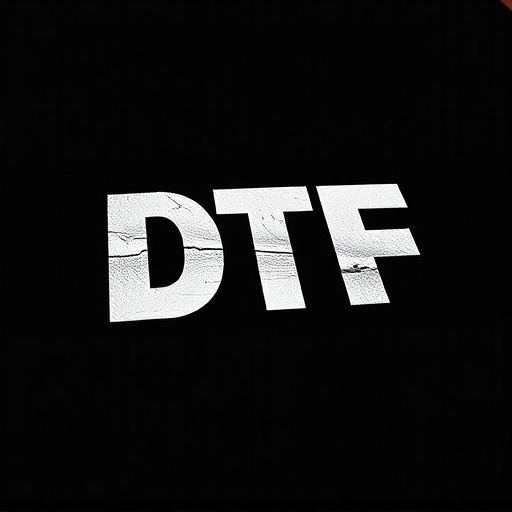Direct to Film (DTF) printing revolutionizes digital art transformation, offering a cutting-edge method to create vibrant, tangible prints. This process involves exposing high-resolution digital designs onto transparent film with UV light, suitable for various applications from personal projects to large-format displays. Choosing the right materials and precise editing ensures superior DTF transfers with rich colors and exceptional detail, ideal for art prints, merchandise, and even vintage film restoration. DTF's versatility in fashion, packaging, education, and historic preservation makes it a game-changer in media production.
“Discover the captivating world of DTF (Direct-to-Film) transfers – a creative process that transforms detailed illustrations and designs into stunning film transfers. From the initial understanding of this unique method to its diverse applications in various media, this article explores every facet of DTF printing. Learn about the materials, techniques, and tips needed to achieve crisp prints, opening doors to endless artistic possibilities. Dive into the art of DTF transfer and explore its impact across different creative platforms.”
- Understanding DTF Transfer: A Creative Process
- From Illustrations to Film: The Transformation
- Choosing the Right Materials for DTF Printing
- Techniques and Tools for Achieving Crisp Prints
- Applications of DTF Transfers in Various Media
- The Art of DTF Printing: Tips for Achieving Outstanding Results
Understanding DTF Transfer: A Creative Process

The DTF (Direct to Film) transfer process is an innovative creative technique that brings detailed illustrations and designs to life on film. It’s a unique method where high-resolution digital art is directly imprinted onto transparent film, creating precise and vibrant prints. This technology offers artists and designers an exciting way to transform their digital creations into tangible, tactile mediums.
DTF Printing involves several steps, ensuring every detail is accurately replicated. Artists prepare their designs digitally, optimizing them for the transfer process. Then, specialized equipment exposes the film to UV light, precisely transferring the image. The result is a stunning reproduction of the original art, perfect for creating limited-edition prints, art exhibition pieces, or even unique merchandise. This method allows for artistic expression on a variety of scales, from small personal projects to large-format displays.
From Illustrations to Film: The Transformation

The journey from illustrations to film transfers is a captivating process that brings static images to life in a unique and tangible way. It starts with intricate hand-drawn or digital designs, where artists pour their creativity into every line, shade, and detail. These illustrations, often brimming with visual storytelling, are then digitally scanned at high resolution, capturing every delicate stroke and color hue.
The next step involves the magic of DTF (Direct to Film) transfer, a cutting-edge printing technique. The digital file is converted into a negative, which, when exposed onto light-sensitive film, creates a positive imprint. This process replicates the illustration with remarkable accuracy, preserving the artist’s vision and allowing for a wide range of creative possibilities. DTF transfers offer a distinct, retro aesthetic, making them popular choices for various applications, from art prints to clothing designs, and even in the restoration of vintage films.
Choosing the Right Materials for DTF Printing

When it comes to bringing detailed illustrations and designs to life in film transfers, choosing the right materials for DTF (Direct-to-Film) printing is paramount. The process involves selecting high-quality films and inks that align perfectly with your creative vision. Opting for versatile and durable substrates ensures crisp, long-lasting DTF prints that can withstand various applications, from art exhibitions to merchandise.
Factors like ink adhesion, transparency, and resistance to fading are crucial considerations. Professional-grade printing films, often made from mylar or polyester, offer exceptional clarity and adhere well to a range of surfaces, making them ideal for DTF transfer. Additionally, investing in vibrant, archival inks guarantees that the colors in your designs remain rich and true over time, enhancing the overall aesthetic appeal of your final film transfers.
Techniques and Tools for Achieving Crisp Prints

The process of transforming detailed illustrations and designs into film transfers, often referred to as DTF (Direct to Film) Transfer or DTF Printing, involves a meticulous approach to ensure crisp and accurate prints. This technique requires specialized tools and techniques to capture every intricate detail from the original art. One of the primary methods is through high-resolution scanning, utilizing advanced scanners that can capture images at extremely high pixel densities, preserving even the smallest lines and textures.
After scanning, the digital file undergoes meticulous editing and enhancement. Professionals use software designed for vectorization, allowing them to refine and clean up any imperfections or noise in the image. This step is crucial for achieving crisp prints, as it ensures that the final film transfer accurately represents the original design without blurring or distortion. The enhanced digital file is then ready for printing, where specialized printers can create DTF prints with exceptional clarity and detail, bringing the illustrations to life on a variety of media.
Applications of DTF Transfers in Various Media

The applications of Direct to Film (DTF) transfers have expanded significantly across various media, revolutionizing the way traditional art and illustrations are brought to life. In the realm of printing, DTF offers a unique process where high-quality artwork can be directly printed onto film, enabling intricate designs to be captured with remarkable precision. This technology has found its place in industries such as fashion, packaging, and even fine art, allowing designers and artists to create vibrant, durable prints that are both visually stunning and long-lasting.
Media outlets have also embraced DTF transfers for their ability to preserve historical illustrations and photographs. By transferring these images onto film, old masterpieces can be digitized and shared with a new generation, ensuring their preservation for years to come. Furthermore, the versatility of DTF Printing allows for its use in educational tools, creating engaging visual aids for teaching complex concepts or historical events, making learning more interactive and immersive.
The Art of DTF Printing: Tips for Achieving Outstanding Results
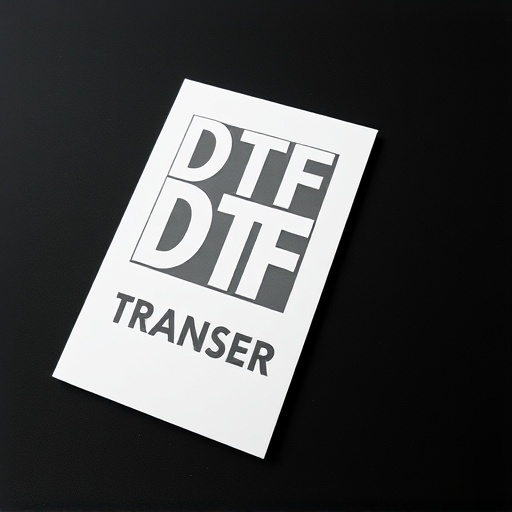
The art of DTF (Direct to Film) Printing is a captivating process that brings detailed illustrations and designs to life on film transfers. To achieve outstanding DTF prints, consider these essential tips. First, ensure your artwork is high-resolution and lineart; any imperfections will be amplified in the final transfer. Use consistent line weights and avoid complex gradients or blends to maintain crispness.
Preparation is key; clean your film stock thoroughly to prevent static cling and ensure optimal adhesion. When printing, use a high-quality printer with precise color settings for accurate representation. After printing, carefully apply heat using a press or iron, following recommended temperatures for your film type. Allow adequate drying time to avoid smudging before handling the sensitive film transfer.





